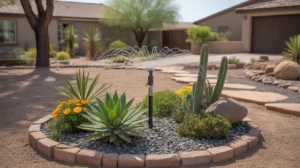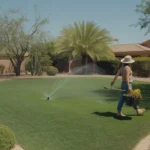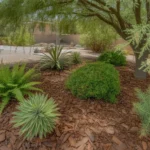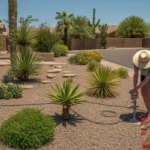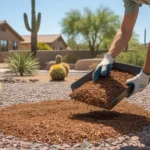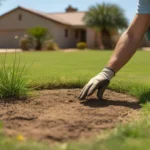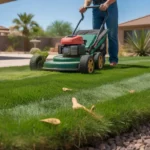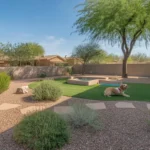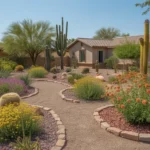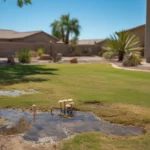Keeping a lush, vibrant yard in Chandler’s arid climate can feel like an uphill battle. But with a few clever hydration hacks, you can quench your landscape’s thirst while conserving water. From smart irrigation to drought-tolerant plant selection, these strategies will help your Chandler yard stay green without guzzling precious resources. Get ready to transform your desert oasis with these game-changing tips.
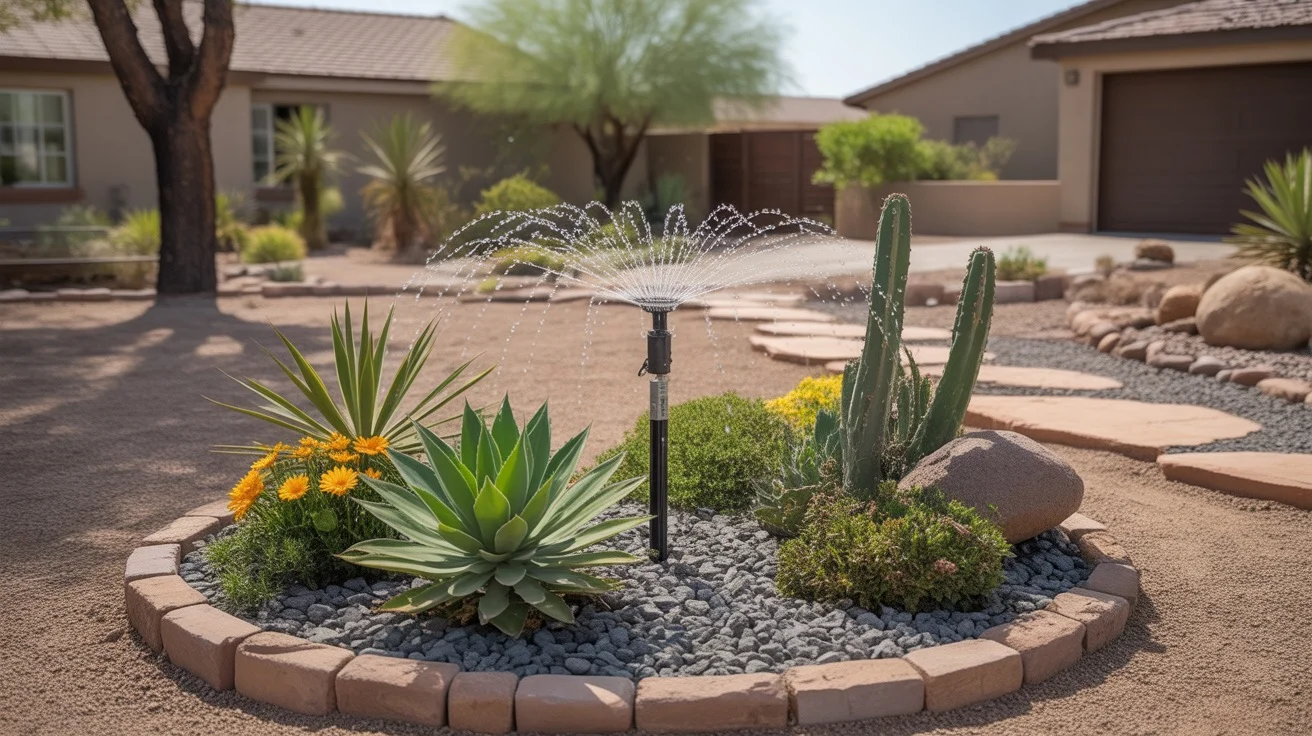
🚰 Embrace Efficient Irrigation
One of the most impactful ways to hydrate your Chandler yard is by upgrading to an efficient irrigation system. Traditional sprinklers can waste water through evaporation and overspray. Instead, consider investing in a drip irrigation setup that delivers water directly to plant roots. This targeted approach minimizes water loss and ensures your plants receive the hydration they need without excess.
When designing your drip irrigation layout, group plants with similar water needs together. This allows you to customize watering zones and avoid overwatering drought-tolerant species. Install a smart controller that adjusts watering schedules based on weather conditions and soil moisture levels. By letting technology optimize your irrigation, you’ll save water and keep your yard healthy.
Don’t forget about the power of mulch! A thick layer of organic mulch, like wood chips or shredded bark, helps retain soil moisture and regulate temperatures. It also suppresses weed growth, reducing competition for water. Apply a 3-4 inch layer of mulch around plants, keeping it a few inches away from stems to prevent rot.
🌵 Embrace Desert-Adapted Plants
One of the smartest ways to create a water-wise Chandler yard is by choosing plants that thrive in arid conditions. Native and desert-adapted species have evolved to handle intense heat and minimal rainfall. By incorporating these resilient beauties into your landscape, you can enjoy a lush yard without constant watering.
For a pop of color, consider vibrant options like desert marigold, angelita daisy, or firecracker penstemon. These drought-tolerant perennials bloom brilliantly with minimal water. Succulents like agave, yucca, and desert spoon add sculptural interest while requiring little hydration. Mix in native shrubs like creosote bush, jojoba, and fairy duster for texture and habitat value.
When planning your desert landscape, use the hydro-zoning technique. Group plants with similar water needs together so you can efficiently irrigate each zone. Place higher water users, like non-native ornamentals, closer to the house where they can be easily maintained. Transition to tougher, drought-tolerant plants further out in the yard.
💧 Water Deeply and Infrequently
One of the biggest misconceptions about desert yard care is that plants need frequent watering to survive the heat. In reality, most established landscape plants thrive with deep, infrequent watering. This encourages roots to grow deeper into the soil, improving drought resilience.
For lawns, aim to water deeply once or twice a week, depending on the grass type and season. Apply about an inch of water per session, which typically takes 30-45 minutes with sprinklers. Avoid the temptation to water lightly every day, as this promotes shallow roots and fungal growth.
Trees and shrubs benefit from periodic deep watering, especially during the hot summer months. Use a soaker hose or drip line to apply water slowly, allowing it to penetrate deep into the root zone. A good rule of thumb is to water established desert trees every 7-10 days in summer, tapering off in cooler months. Always check soil moisture before watering to avoid oversaturating.
🌞 Harness Rainwater and Greywater
In a desert climate like Chandler, every drop of water counts. Capturing free sources like rainwater and greywater can greatly reduce your landscape’s dependence on municipal supplies. Rainwater harvesting involves directing roof runoff into storage tanks or basins for later use on the yard. Even in low rainfall years, a few well-placed rain barrels can provide a valuable water reserve.
Greywater, or gently used water from sinks, showers, and washing machines, is another often-overlooked resource. With proper filtration and distribution, greywater can safely irrigate ornamental plants and trees. Consult with a greywater specialist to design a system that meets Chandler’s code requirements and your yard’s needs.
When applying harvested water, remember that it should supplement, not replace, your regular irrigation schedule. Rainwater is naturally low in salts and nutrients, making it ideal for periodic deep watering of trees and shrubs. Greywater is best used on non-edible plants and should be applied subsurface to avoid contact with foliage.
🌊 Manage Runoff and Erosion
Chandler’s intense monsoon storms can wreak havoc on yards, causing erosion and washing away valuable topsoil. Implementing smart runoff management techniques not only protects your landscape but also helps retain water for plants.
One effective strategy is to create berms and swales – gently sloped mounds and depressions that slow and direct water flow. By contouring your yard to guide runoff toward plant basins, you can capture stormwater for deep percolation. This technique is especially useful for irrigating deep-rooted trees and shrubs.
In areas prone to erosion, like slopes or bare patches, consider installing permeable hardscapes or groundcovers. Gravel pathways, river rock dry streambeds, and stepping stones allow water to infiltrate while providing stable footing. Low-growing groundcovers like damianita, trailing indigo bush, and Myoporum help knit the soil together to resist washouts.
💪🏼 Fortify Soil Health
Healthy soil is the foundation of a thriving, water-efficient yard. Chandler’s native soils are often lean and compacted, lacking the organic matter and structure needed to retain moisture. By improving soil health, you can boost your yard’s hydration capacity and reduce watering needs.
Start by aerating lawns and compacted areas to improve water penetration. Use a core aerator or digging fork to create small holes in the soil surface, allowing air, water, and nutrients to reach plant roots. This is especially important in high-traffic areas or clay-heavy soils.
Next, incorporate organic matter like compost, aged manure, or worm castings into planting beds. These amendments help sandy soils retain moisture and loosen heavy clays. Aim to work in a few inches of organic matter before planting, and top-dress annually to maintain soil health. Avoid tilling or disturbing the soil excessively, as this can damage beneficial microbial communities.
By combining these hydration hacks, you can transform your Chandler yard into a water-wise oasis that thrives through the toughest desert conditions. From efficient irrigation to soil care, each strategy plays a vital role in quenching your landscape’s thirst. Embrace the beauty and resilience of desert-adapted plants, and enjoy a yard that flourishes while conserving our most precious resource.

